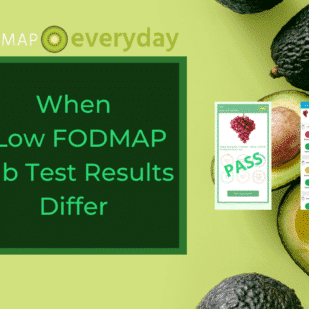Monash University and FODMAP Friendly are the two entities that are lab testing individual ingredients and commercially prepared products, including supplements, for FODMAP content and publishing the results on their smartphone apps. This post focuses on the Food Guide on the Monash University Low FODMAP Diet App™, although we will touch upon the app’s additional features.
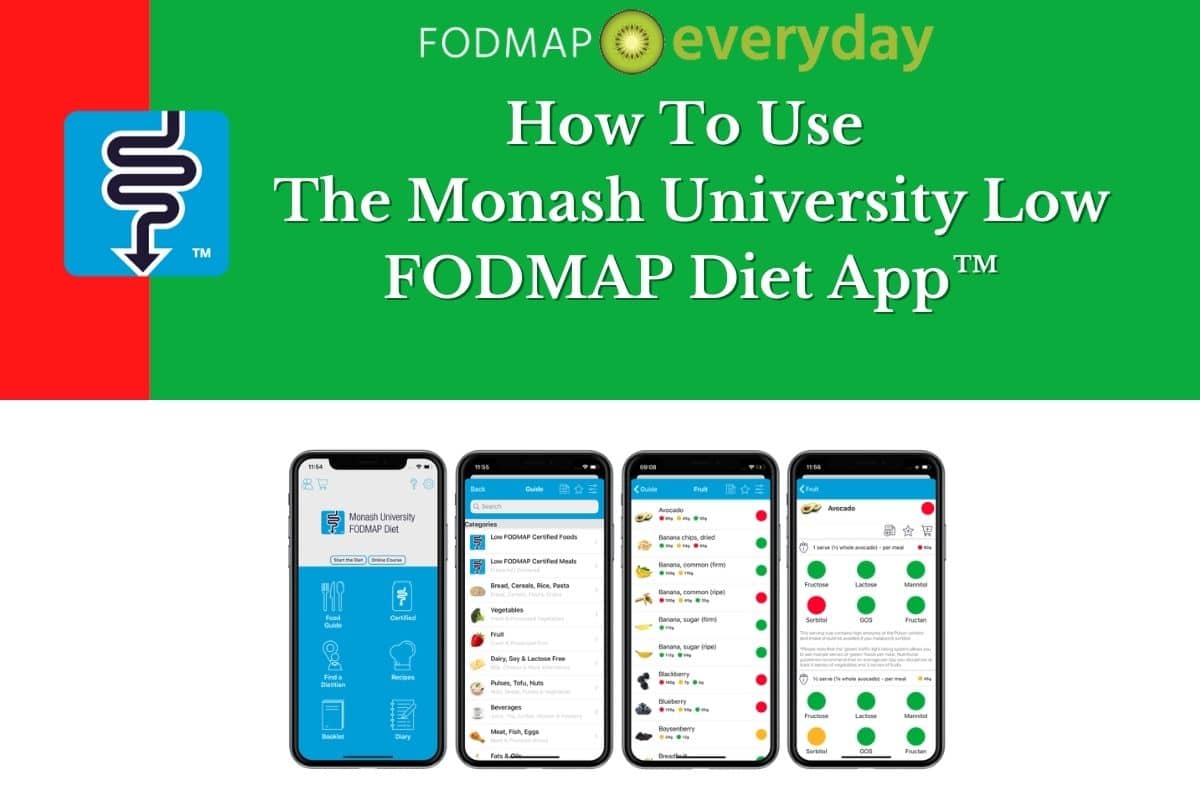
Click HERE to read more about the Monash University Low FODMAP Diet App™, in their words, and all that is has to offer, in addition to the much-loved Food Guide, such as a Diary, instructions on how to Start the Diet, access to their Online Course (which we have reviewed), and more. You can also read their description about their lab testing procedures here and we strongly suggest that you read our companion article, Monash University Lab Testing Explained.
Reputable Resource
EVERYONE following the low FODMAP diet should have both the FODMAP Friendly and Monash University apps. Period. No excuses. Both are available for Android and iPhone.
The Monash University app does have a small, one-time fee, but it might be the best money you spend to have the most reliable, current, up-to-date information on FODMAPs at your fingertips from researchers who developed the diet. All the money goes back into research.

What Is In The App
The Monash University app offers the FODMAPer a huge amount of evidence-based information, right at your fingertips, all within this one app.
When you open the app, you see this screen, below. Let’s first look at the upper left area, first.
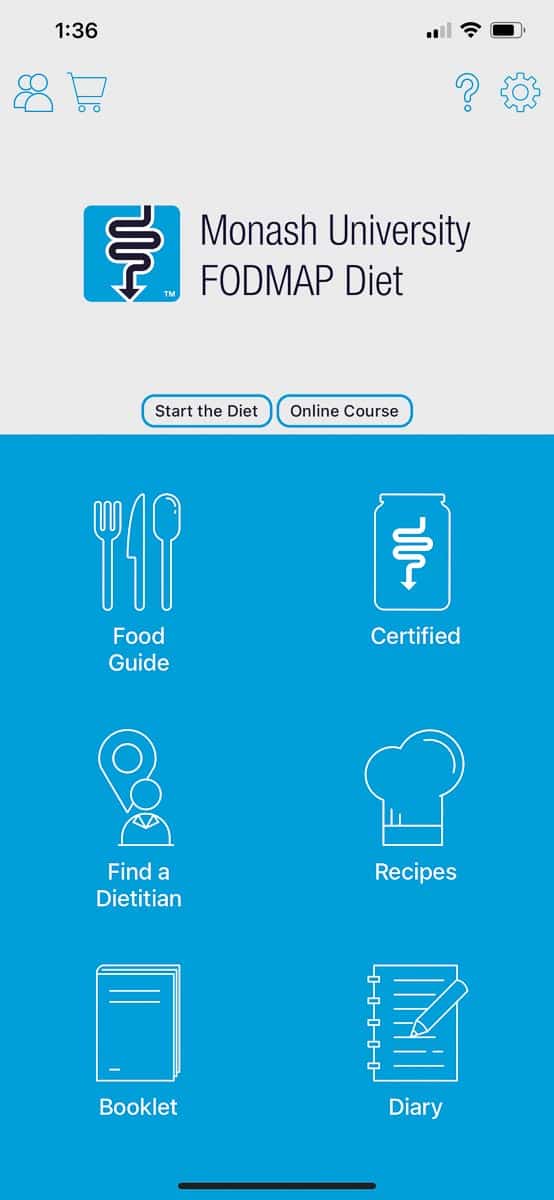
Community Icon
The little icon showing silhouette line drawings of 2 people (upper left) takes you to a main page of Monash University community information: access to their website, blog, Facebook, Twitter and Instagram, as well as a ModifyHealth Questionnaire (a partner of theirs).
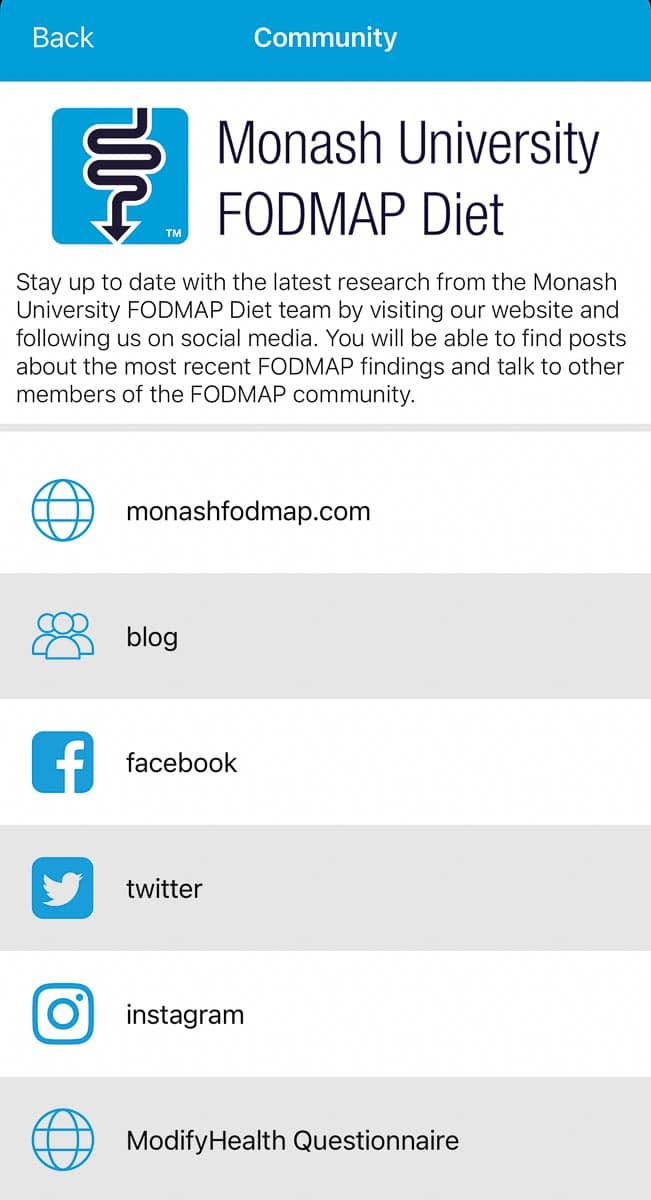
Shopping Cart
The Shopping Cart (the next icon) allows you to make a list of all the fantastic low FODMAP foods to gather at the store to set yourself up for success.
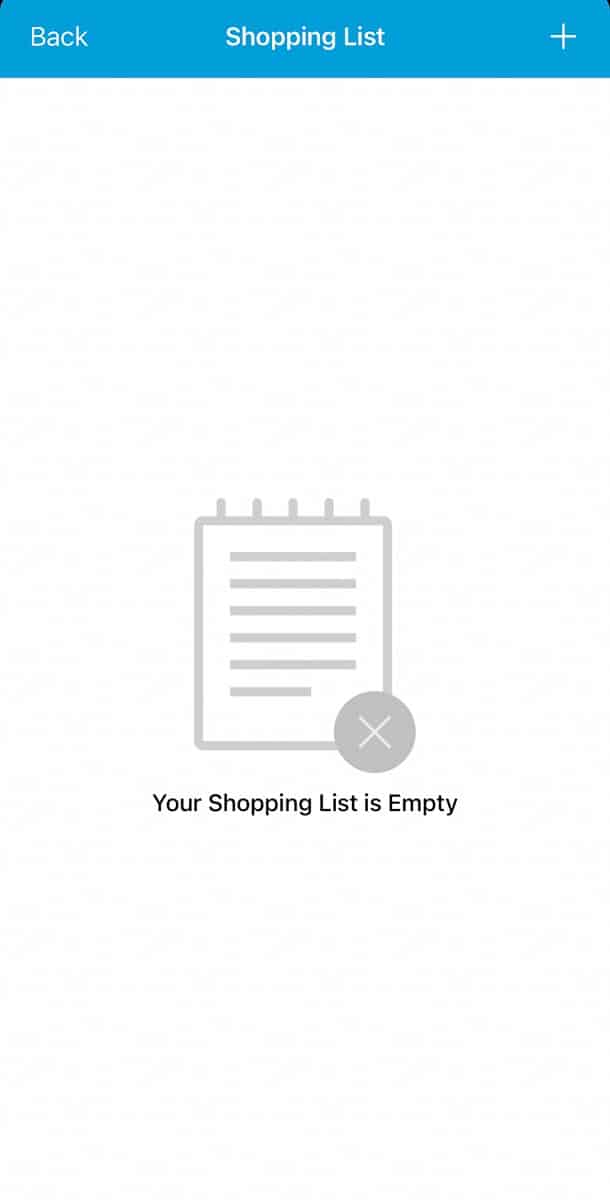
Question Mark
The Question mark in the upper right brings you to a section where you can see an App Overview, information on Using The Food Guide, as well as how to Use The Filters. The filters allow you to personalize the app to your own tolerances, which you will learn during your Challenge Phase.
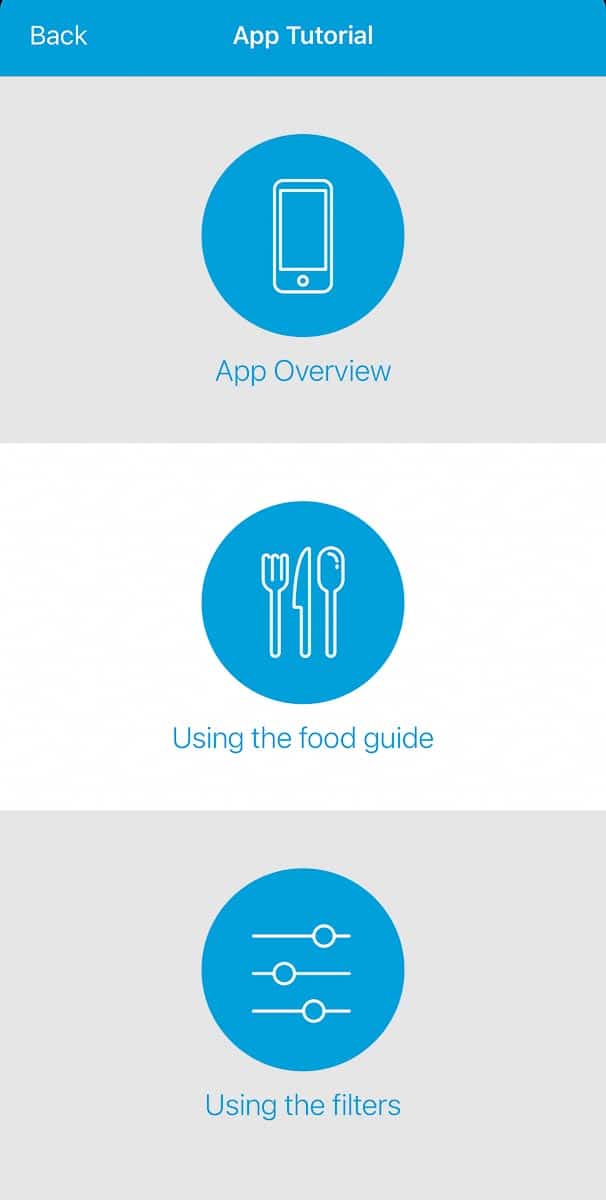
Settings
Note the gear wheel “settings” in the upper right on the main page. Click through and set your app to either Metric (grams) or Imperial (ounces) before you go any further, depending on where you live, and your desired presentation.
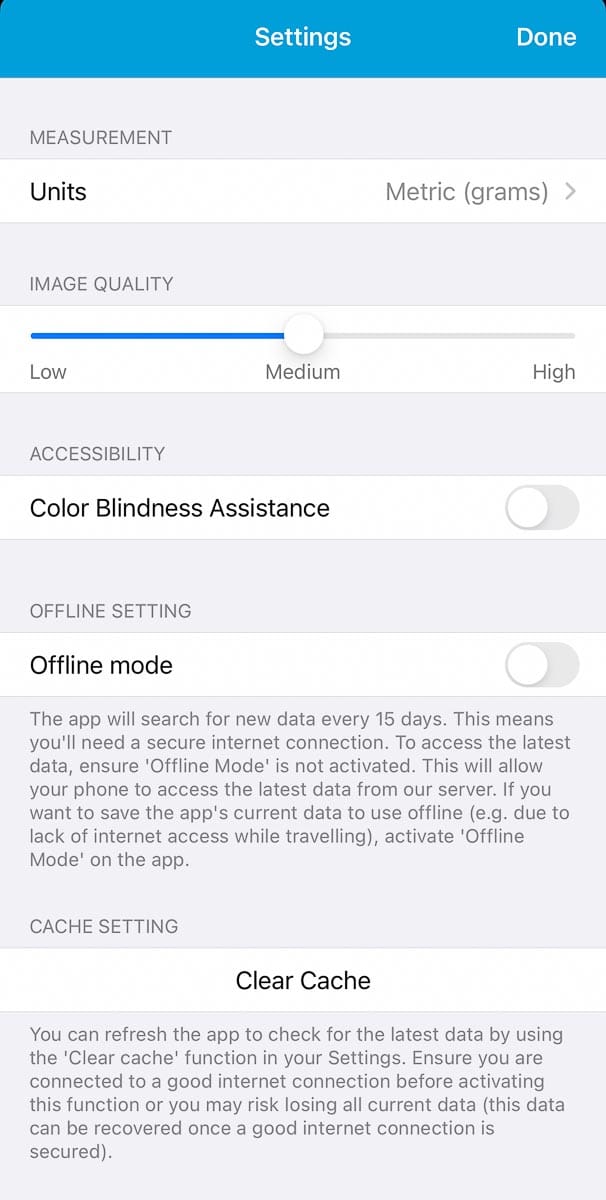
The Settings area also allows you to send feedback, check which version you have installed – both near the bottom and not shown – clear the cache and there is even color blindness assistance.
Start The Diet
This button takes you to a user interface where you can learn about FODMAPs, their relationship to IBS and the 3 stages of the diet (Step 3: Personalization not shown below).
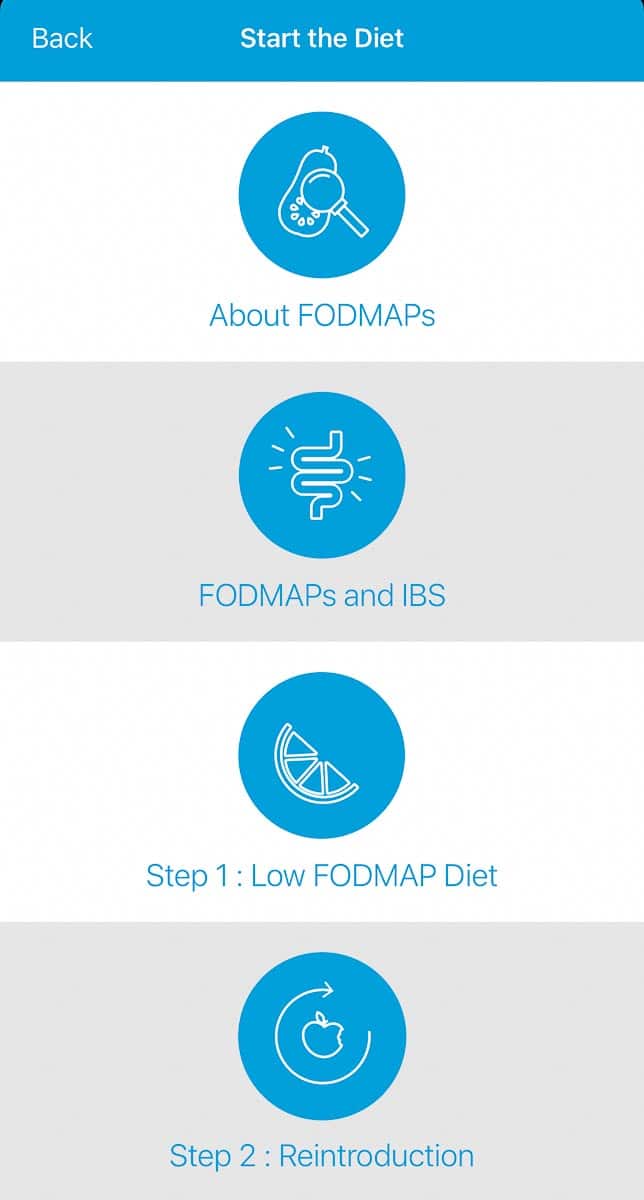
Online Course
The Online Course button takes you to a page that explains their course, geared towards the patient. They have a dietitian course as well; both courses are well worth the money. Our team has completed, and reviewed, the Dietitian’s Course, and has also reviewed the patient course.
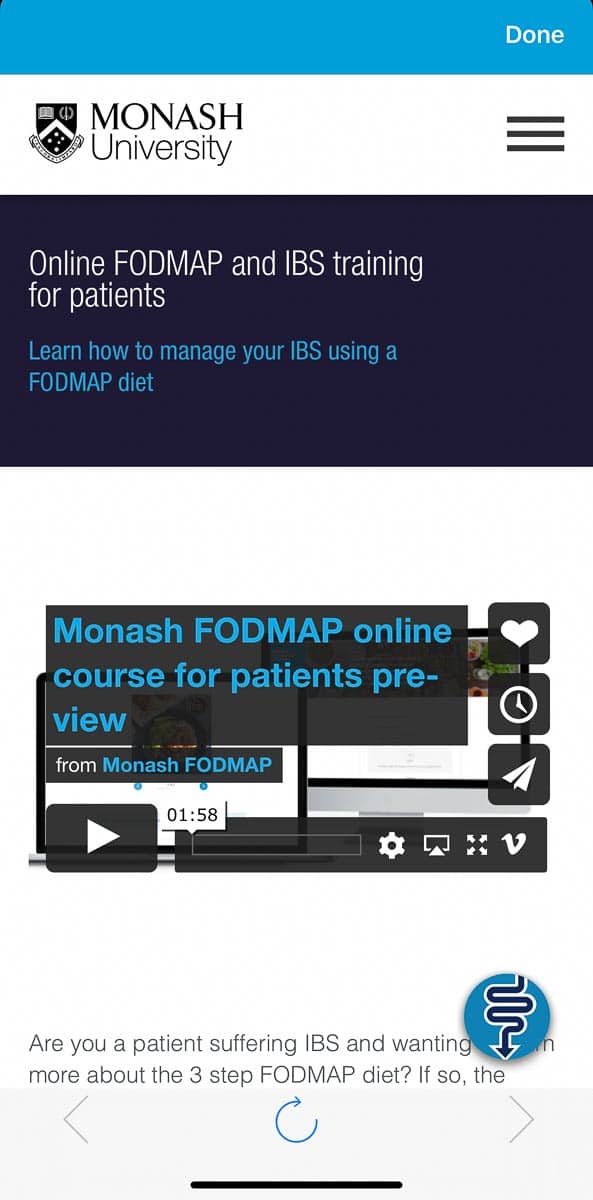
Certified
Monash University lab tests and certifies finished products, such as pasta sauces, energy bars, protein powders, breads, spice blends and so much more. This is the area you will find all of those brands. Many of your favorites are here, such as BelliWelli, Gourmend, Fody, Smoke ‘n Sanity, Schar, Kelloggs, ModifyHealth, Quaker, and so many more. They are in alphabetical order and more than shown below.
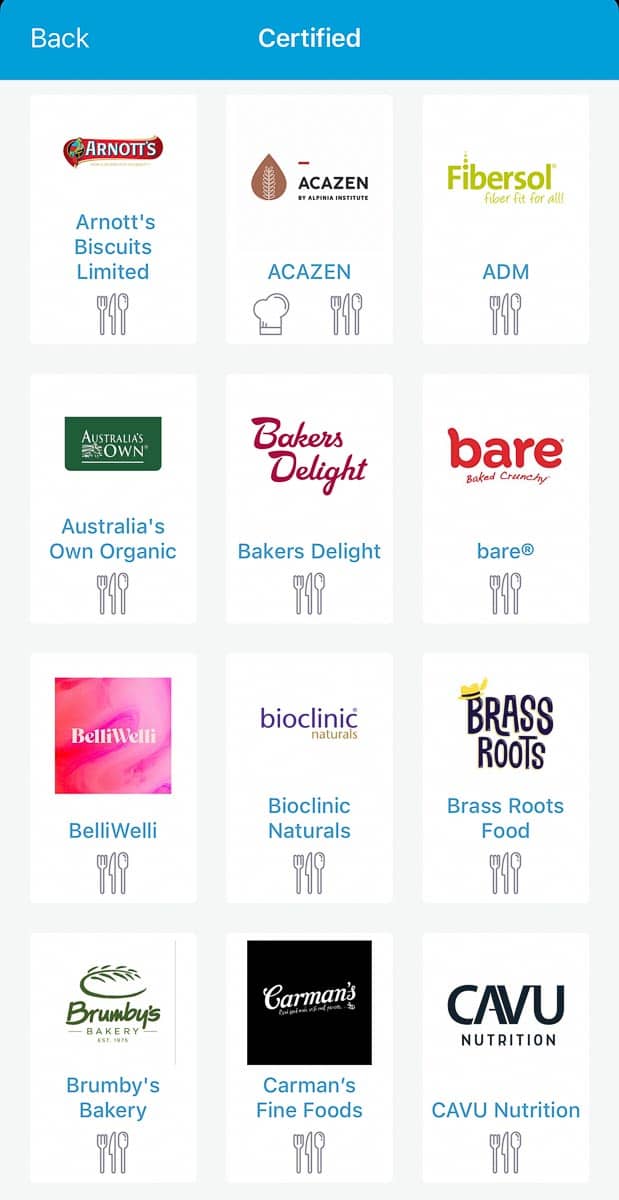
When you see the icon below on a packaged food, you are guaranteed that it is low FODMAP at the serving size listed. The products made by these brands that are lab tested will sport the icon on their labels.
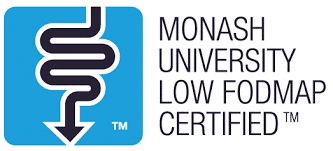
Find a Dietitian
Monash maintains a list (as do we) of dietitians throughout the world who have completed their FODMAP training. You can find their list here on the app, which is alphabetical and more extensive than what we show below; in fact, 57 countries are represented.
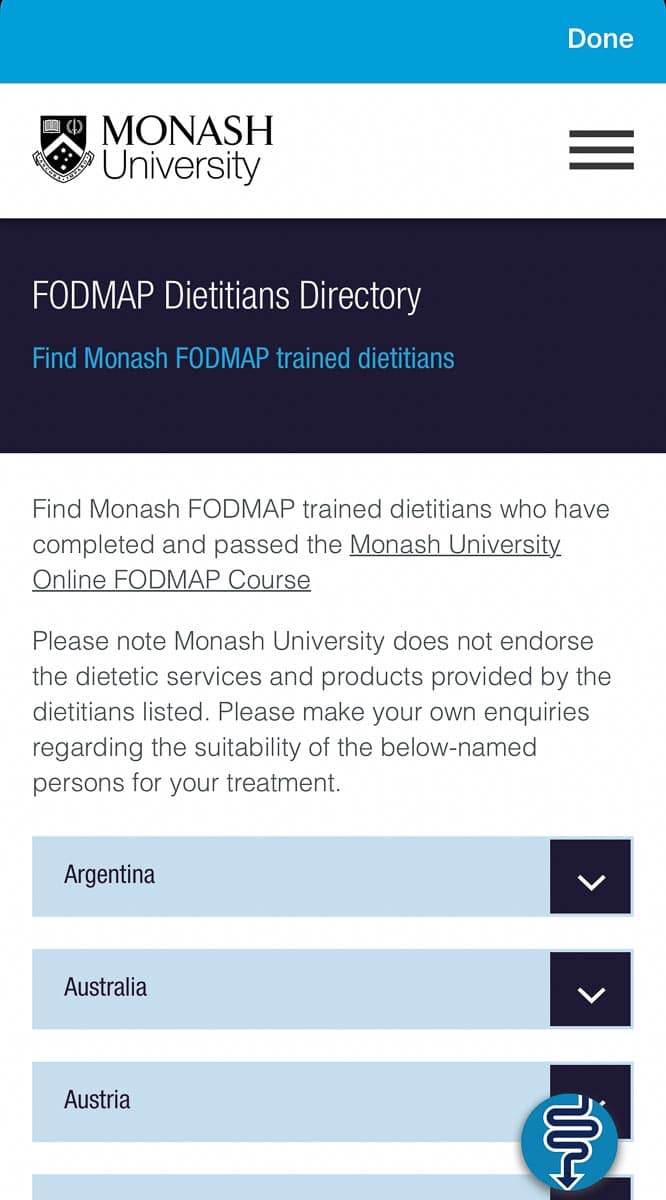
Recipes
Here at FODMAP Everyday® we have about 1000 recipes based upon Monash University science, all free for the user, but you can also find recipes on the Monash app in this app section shown below.
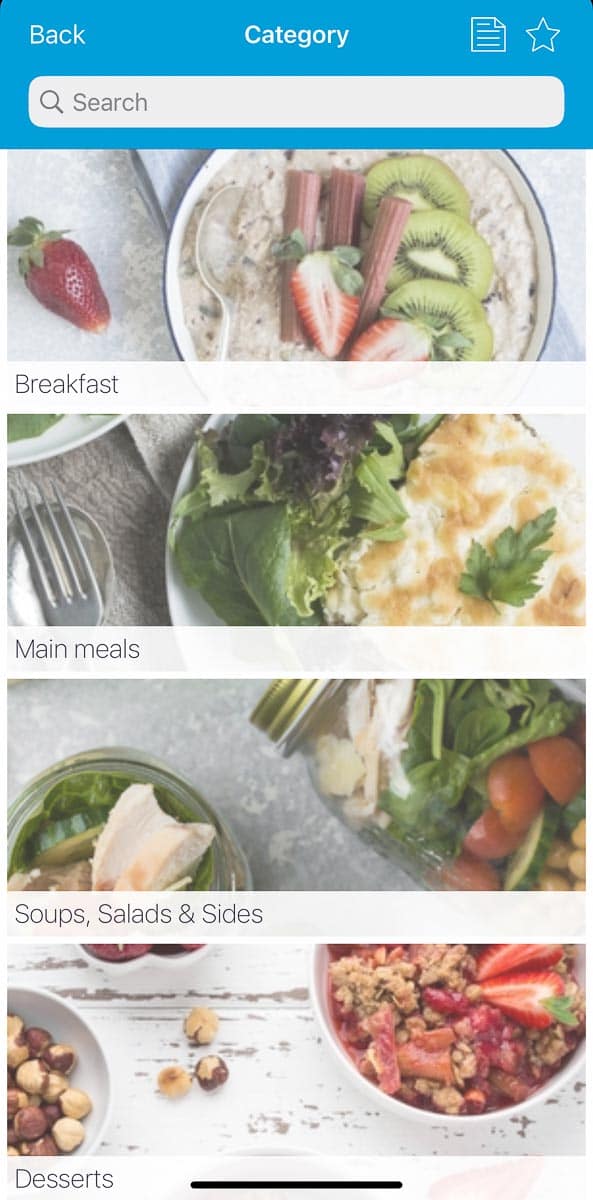
Booklet
The “booklet” is a page with links to frequently asked questions and areas of interest, such as IBS and Digestion, Eating Out On The Low FODMAP Diet, A Short History of FODMAPs, and more. Do not overlook the Credits at the bottom (not shown below). Within that section you can access peer reviewed trials and articles from the Monash team and additional evidence-based FODMAP information.
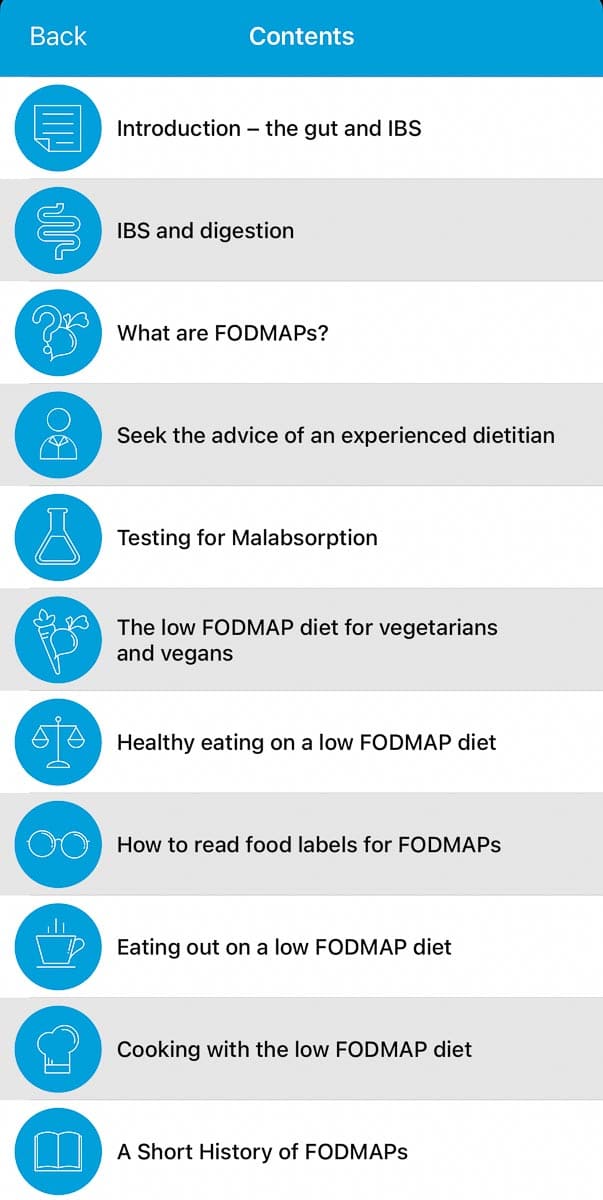
Diary
The Diary is where you can record your personal reactions to foods as you Challenge yourself. This will help you keep track of reactions so that you learn about your unique FODMAP tolerances.
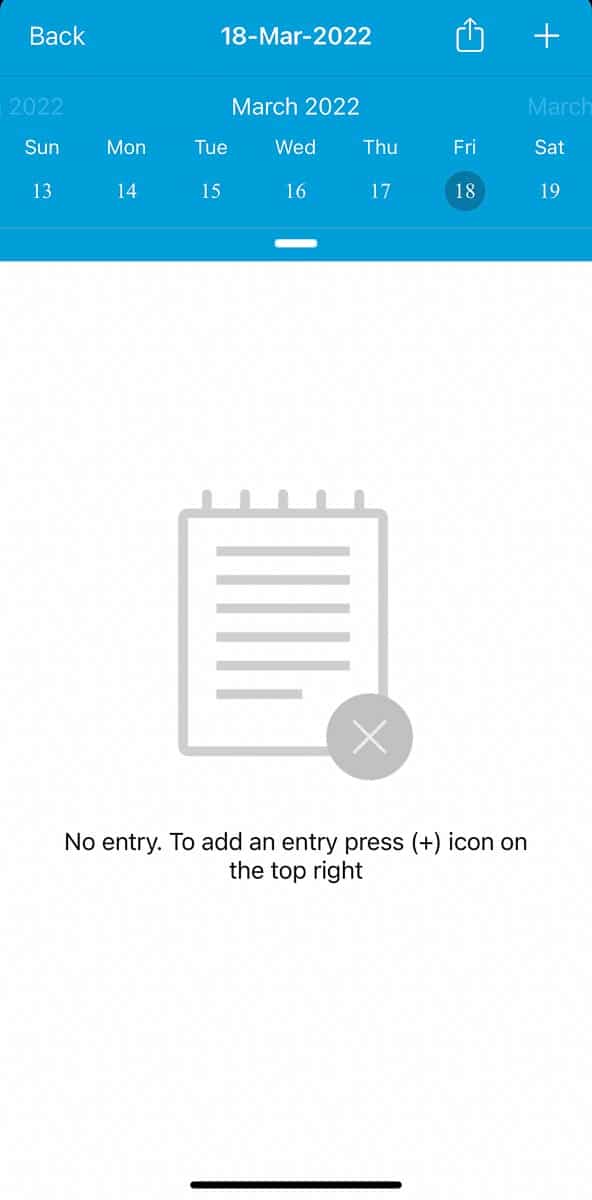
The Food Guide
The Food Guide is the part of the app that we use numerous times, everyday, and so will you. We will be diving deep into this section, as this is where you can look up foods and learn what their FODMAP content is, and whether they have low FODMAP serving sizes. Here is the main page of the Food Guide:
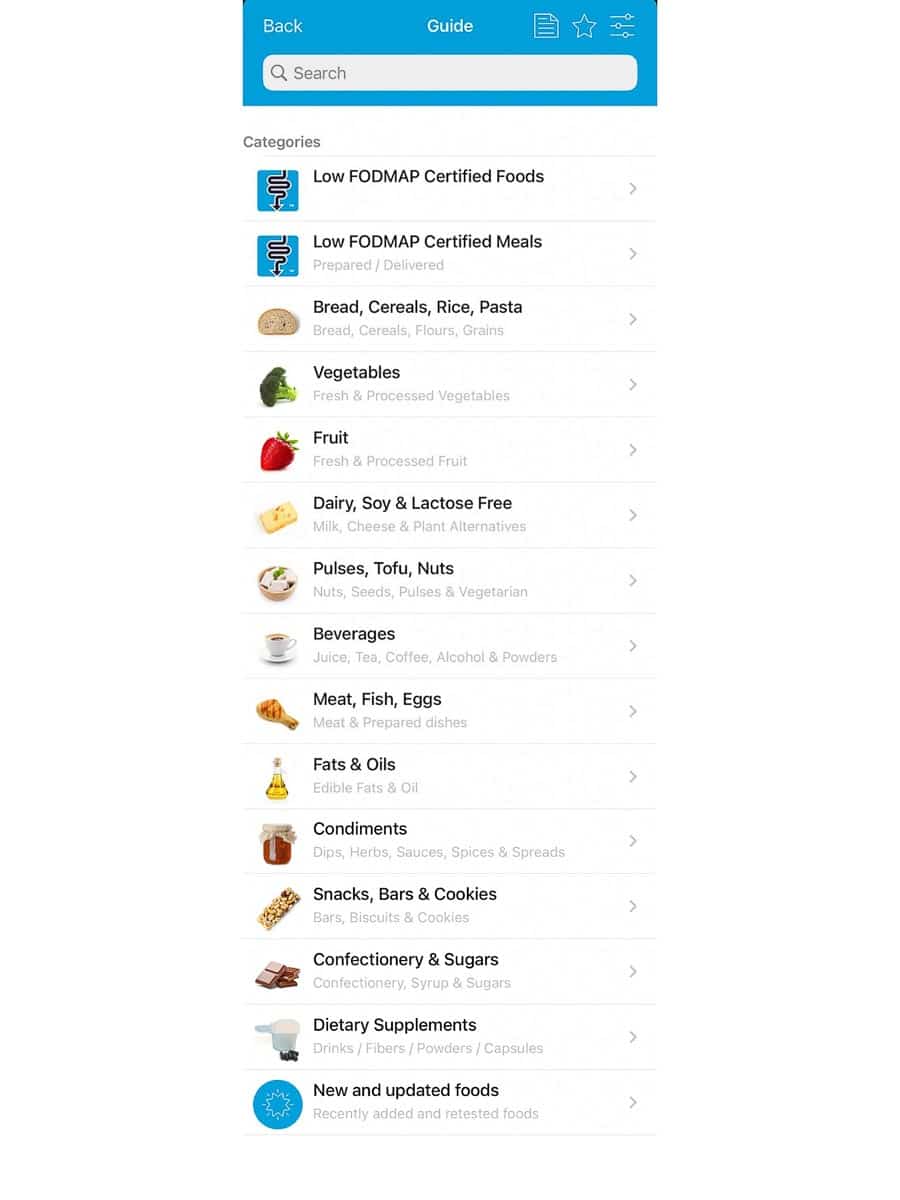
Don’t worry! We know this is a lot to take in, but as you use the app you will get used to the system. You can go to the individual sections, or just type in what you are looking for into the search bar on top.
PS: We love checking the New and Updated Foods link at the bottom frequently for the most recently added foods.
A Note On Weights
First we would like to discuss one of the over-arching suggestions we have for using the app.
It is important to note, that although the smartphone app entries will present foods in volume, and/or number count (such as ½ cup butternut squash or 4 Brussels sprouts) as well as a weight, the weight amount is always the most accurate.
Monash University, and we, recommend using the weights as your guide.
…although the smartphone app entries will present foods in volume (or number count) as well as a weight, the weight amount is always the most accurate.
Monash University, and we, recommend using the weights as your guide.
Please take a moment to read the quote above. When we have taken products into our Test Kitchen to review, we have seen time and time again that the volumes presented in the app are not always accurate in relation to the weight. We have queried Monash University researchers about this and they have told us repeatedly, and we will tell you, to always defer to the weight.
In addition, we suggest not using number count. Monash University insists on continuing to list app entries such as “2 large squares” of chocolate, or “⅛ whole avocado” when these numbers mean nothing. How big is a “square”? Avocados can range from about 3-ounces a piece to over 5-pounds. The images below show these kinds of variation, in this case with Brussels sprouts and avocados.
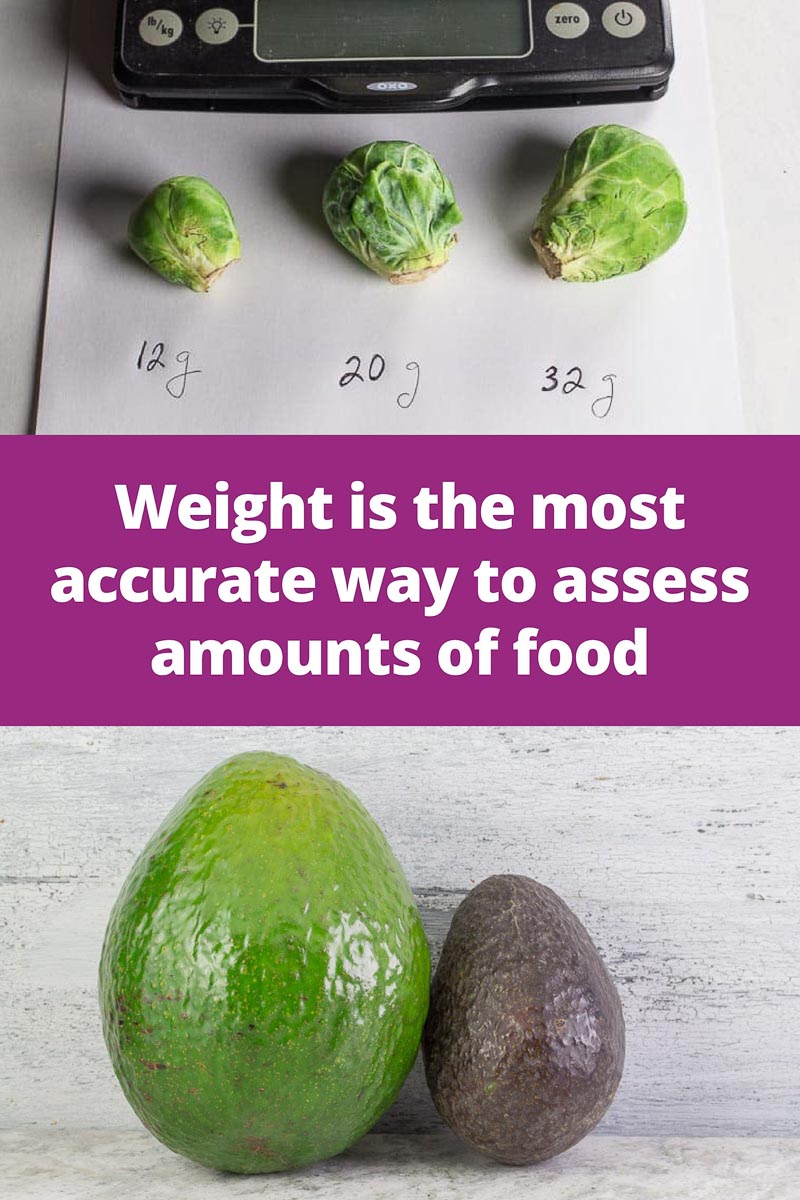
Monash University Low FODMAP Traffic Light System
If you have heard the term “Green Light” in reference to a low FODMAP food, it is referencing the Monash University smartphone app. Their app uses a traffic light system and this found within the Food Guide, which we will now show you below.
- Green Light indicates Low FODMAP
- Yellow Light (or what they call amber) indicates Moderate levels of FODMAPs
- Red Light indicates High FODMAP
One of the MOST important things you have to learn about this traffic light system is that the color light given to a food is based upon a specific serving size – and the serving sizes can be confusing at first.
Let’s click on Pulses, Tofu, Nuts and then find Almonds. You will see that almonds are given a Red Light. They are high FODMAP at what Monash University considers one serving, which they place at 20 whole nuts, or 24 g.
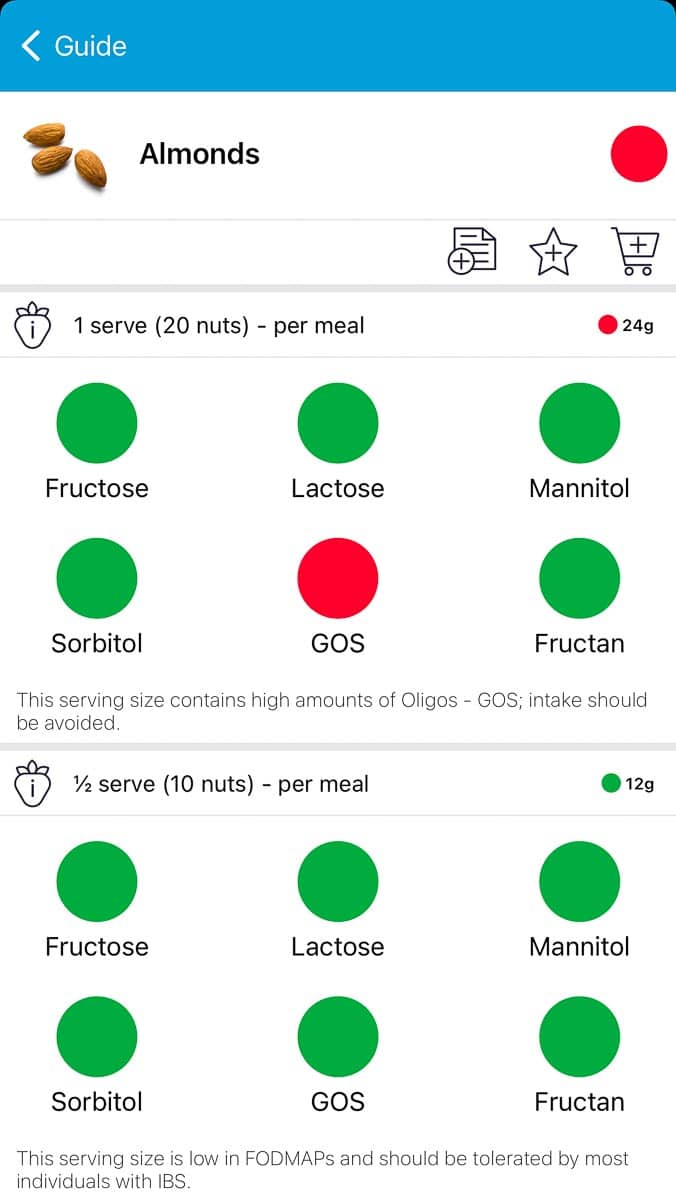
You HAVE to train yourself to click through so that you can see the entire app entry. You will then clearly see (as shown above) that almonds are Green Light low FODMAP at 10 nuts, or 12 g. That is plenty for a snack, to toss on a salad, into granola, etc. Viewed this way, you can see how almonds can be low FODMAP. We invite you to look up almonds on the Monash University smartphone app right now, so you can view what we are discussing.
Printed Lists Can Be Deceiving
This is one of the reasons why printed High/Low FODMAP lists are often misleading. They might tell you that almonds are high FODMAP and you would never know that they can be low FODMAP, per a different serving size. Too many people overly restrict their food intake based upon these incomplete charts.
Check out our article, High FODMAP Foods With Low FODMAP Serving Sizes, for more info.
If you are in the U.S. you might also be interested in our article on How To Read A FDA Nutrition Facts Label, which discusses how the government sets serving sizes.
Limitations Of The Monash App
Some foods on the Monash University Smartphone App will show you a Green Light low FODMAP amount, as well as a Yellow Light moderate amount, and a Red Light high amount – but not always.
Some foods do not have a Green Light low FODMAP amount (only Yellow and/or Red) and we do not know if Monash would have tested a smaller amount whether there would be a low FODMAP serving size of that food.
Cauliflower is an example. It has a Red Light designation at ¾ cup or 75 g, which is quite a generous amount. Would a smaller serving size be low FODMAP? We do not know.
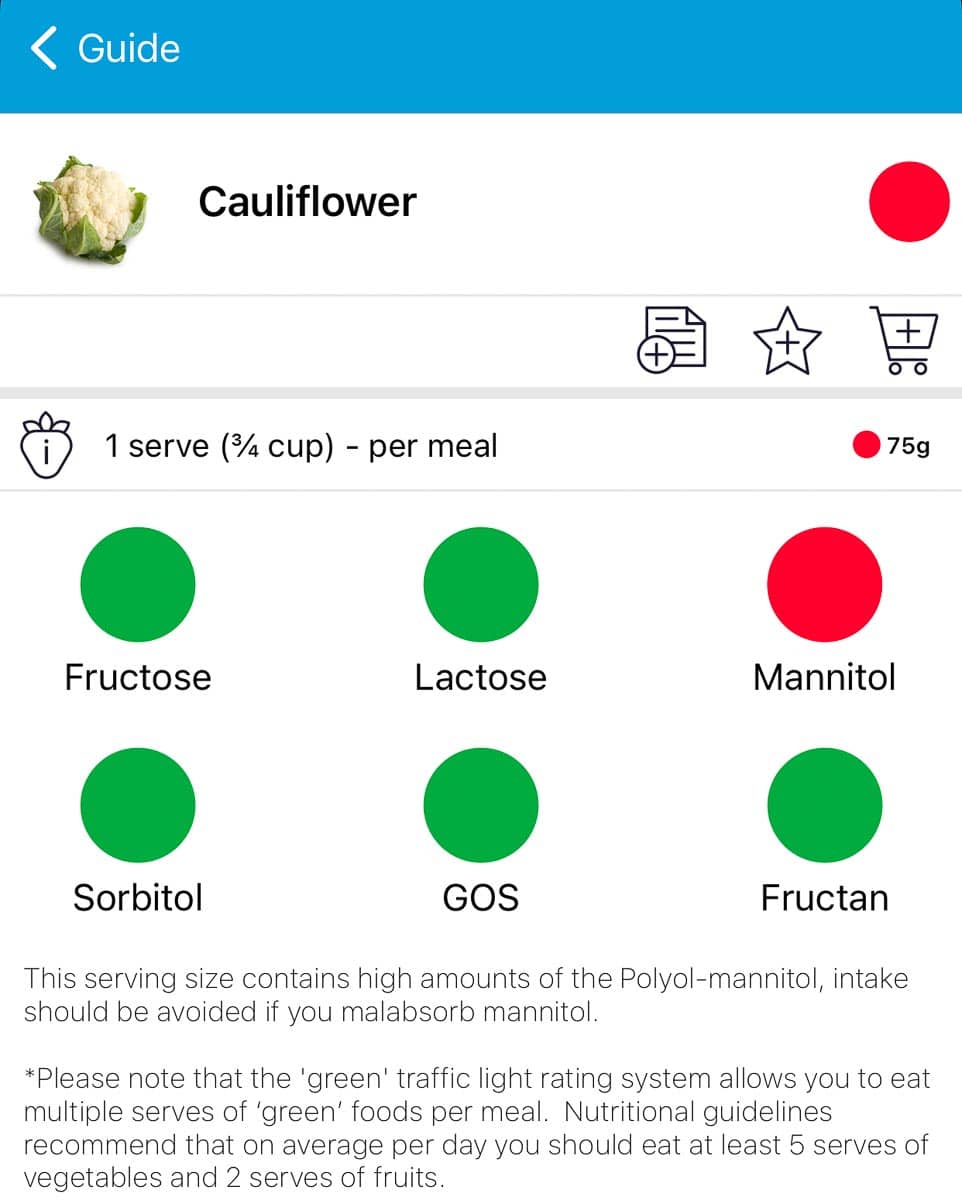
Other times an item only has a Green Light. Sometimes this means that the item contains no detectable FODMAPs, like cucumbers, or the way grapes used to be presented (more below).
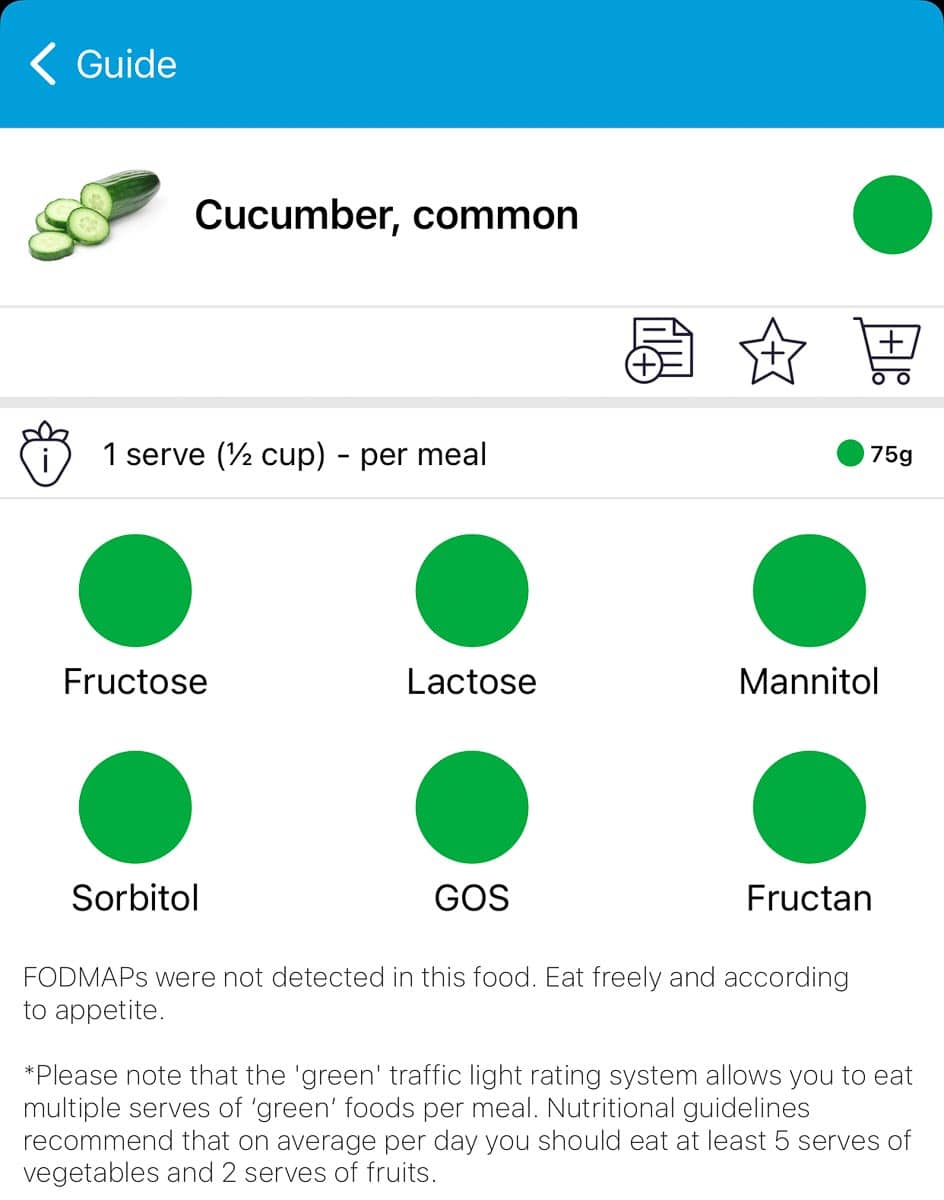
This is not always immediately apparent to the user, because the “FODMAPs were not detected in this food” information is in the small print. In the case of cucumbers shown above, the small print is accompanied by some language that Monash University uses in regard to vegetables and how much you should eat per day per Australian healthy eating guidelines. For vegetables such as cucumbers you can see that the entry also says, “Eat freely and according to appetite”.
No FODMAPs Detected vs. FODMAPs Present
Let’s look at grapes below. They were considered a “no FODMAP” food for years by Monash University (and still are by FODMAP Friendly). The image below is what resided on the Monash smartphone app for several years.
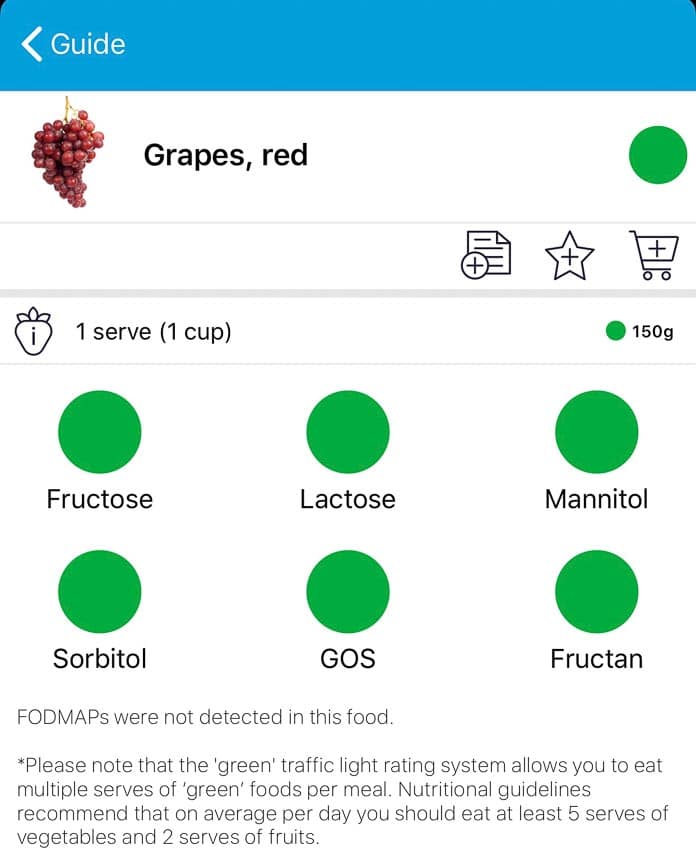
In the case of grapes above, the small print does NOT say eat freely. Even though these grapes were considered “no FODMAP” like cucumbers, the governmental healthy eating guidelines are different for fruits than they are for vegetables.
ALWAYS read the entire app entry, small print and all.
Cooked vs. Raw Foods
For every app entry there will be an image of the food shown in the upper left hand corner. The image is usually of the food in its raw state, so for instance, rice is shown as presented below – a pile of raw rice:
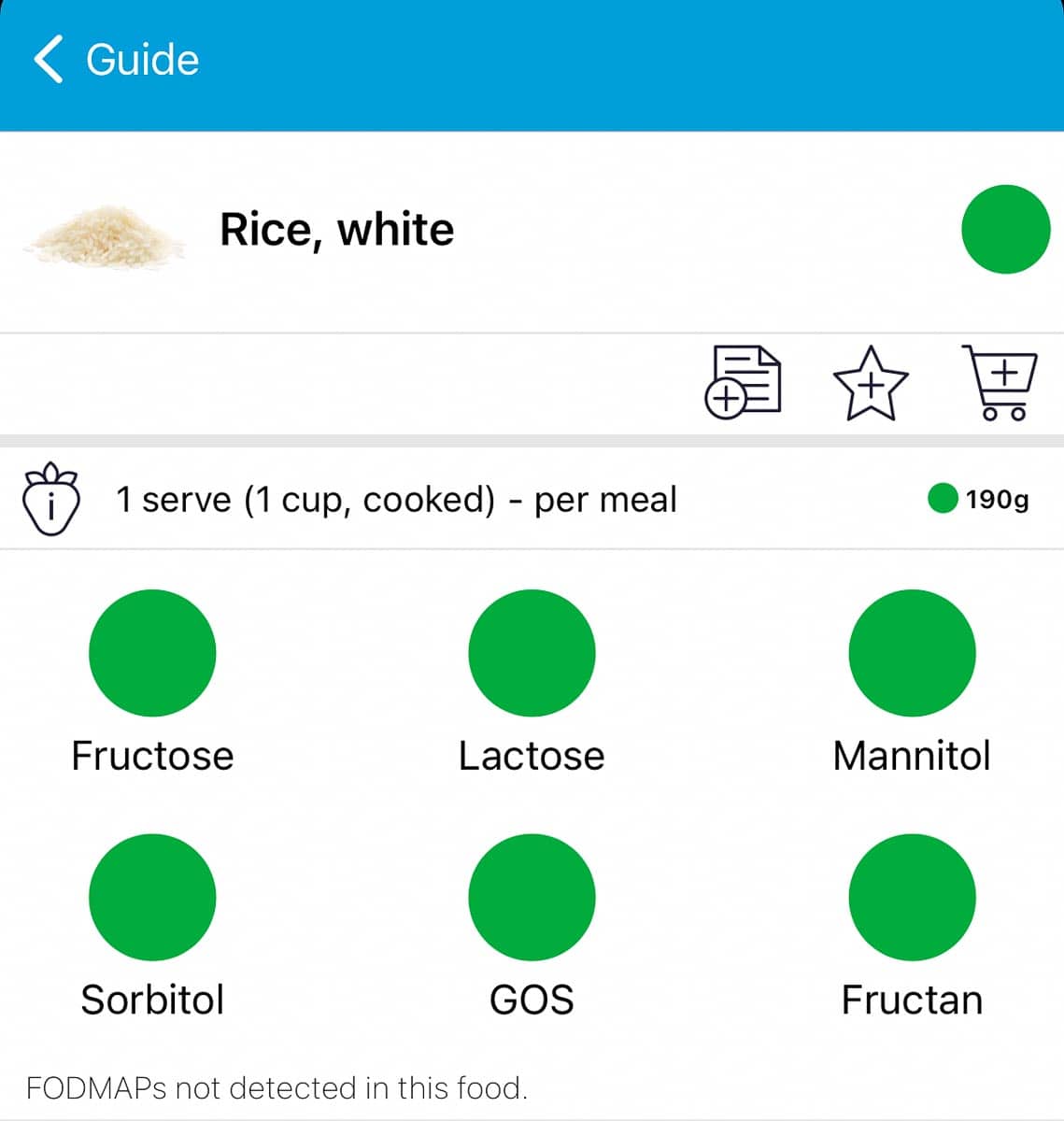
However, if you look at the entry further, you will see that the rice tested was cooked – and they say so. Monash basically tests what you would eat. So a banana is peeled, and the raw banana flesh is lab tested. Rice and beans are cooked, as you would not eat them raw. (Rice flour is handled separately).
Sometimes it is confusing. If you look up oats, they are raw and shown raw. If you look up oatmeal, raw oats are shown, and the additional information says uncooked, even though in the U.S. we would think of oatmeal as cooked.
There are limitations. For instance, a fresh globe artichoke was apparently tested raw, but we would eat it cooked. Artichokes contain fructans, which are water soluble, and this vegetable is often boiled or steamed. There is a very good chance that some fructans would leach into the water and be removed – but we do not know the amount to or to what extent. Beetroot has been lab tested, but not beet greens, which are also edible, etc.
As with any tool, there are limitations and there is a learning curve, but none of these factors detract from the wealth of information in the app, which we consider essential.
When Retested Foods Show New Results
Monash University retested grapes in Fall 2021 and their new lab tests showed the following. The image below shows what is presently displayed on the Monash University smartphone app as of early 2022.
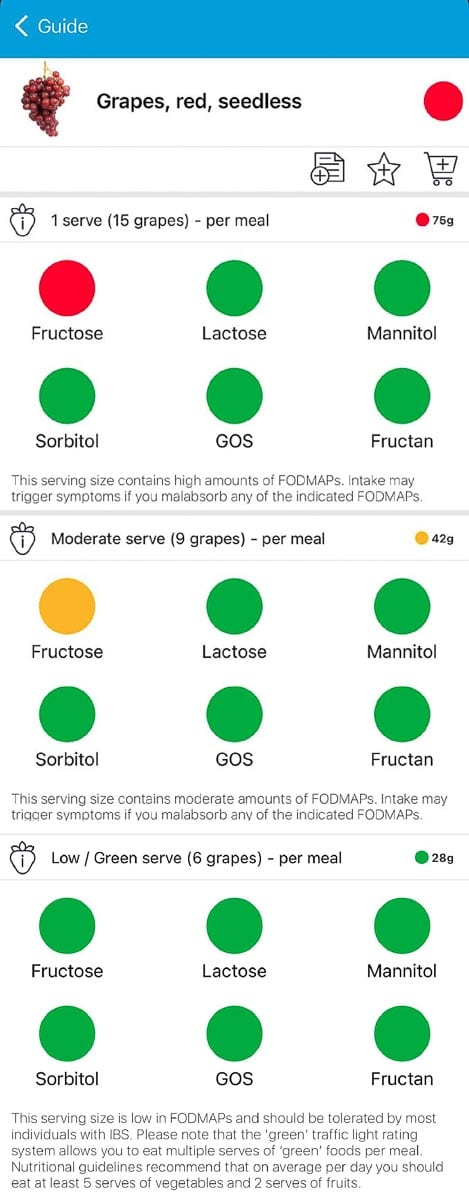
What does this mean? Why are there lab result discrepancies? There are answers to these vexing questions.
Why Are There Lab Result Discrepancies?
The idea that there can be foods that contain no FODMAPs is exciting and appealing to those following the diet. In fact, we have an entire article on No FODMAP Foods as well as some accompanying recipes, and all of that information is based on Monash University lab science and testing.
So, what does it mean when Monash University retests food, such as grapes, and comes up with new information that contradicts what was reported before?
To us, the end user, it looked like grapes were determined to contain no FODMAPs and then all of a sudden, one day during an app update, we were told that they do. We understand that this appears to be contradictory, but we promise you that it is not.
Understanding the Lab Results
Why are there lab result discrepancies? We are going to get into the answer in depth, but if you are looking for a short answer, it is that lab items tested, vary.
Why are there lab result discrepancies? … if you are looking for a short answer, it is that lab items tested, vary.
We explain, in depth, in our article Monash University Lab Testing Explained, how Monash lab tests and what the results mean. Please read that article, which is meant to be used in conjunction with this one.
In brief, there are many variables. To quote Monash University researchers, “Unsurprisingly, we have found that the FODMAP content of foods (especially fresh produce) can vary significantly…” Their researchers have said that we should not be surprised when lab tests show us different results from one test batch to the next, and it is actually to be expected.
Here are just some of the reasons why lab test results vary:
- Variety of produce tested
- Geographical location of growing area
- The chemical structure of plants can change to help ensure survival when exposed to stressors in their environment. The increase in fructans is one such defense mechanism as it provides plant cells with greater structural integrity
- Ripeness (or not)
- Growing and harvesting procedures
- Handling and storage procedures (for instance cold storage is known to increase fructan and also fructose production
Another way to look at it is this: the batches of grapes that Monash tested, will not be the same grapes that you eat. Period. Always remember that any lab test result is simply a line in the sand for you to use to begin to explore your relationship with FODMAPs, which is unique.
Another way to look at it is this: the batches of grapes that Monash tested, will not be the same grapes that you eat. Period.
Extrapolations
The Monash University app is extensive, but does not cover everything under the sun. What do you do if a food is not on either the Monash University smartphone app or the FODMAP Friendly smartphone app, but is similar to a food that has been lab tested? For instance, what about red bananas? Common Cavendish and sugar bananas have been lab tested, but not Red Dwarf, Goldfinger or any other kind of the over 1000 varieties available worldwide. Maybe you do not have access to Cavendish. What then?
Extrapolations can be tricky, as the FODMAP content of a food is unknown until it is lab tested.
This article, What If A Food Has Not Been Lab Tested For FODMAPs? will be very helpful.
Let’s look at a few similar foods:
- Green peppers: In initial tests, Monash reported that they contained sorbitol. In subsequent tests they reported fructans. FODMAP Friendly lab tests show fructans, GOS and sorbitol.
- Red peppers were originally reported by Monash to contain no FODMAPs, and fructans and GOS according to FODMAP Friendly. In subsequent tests, Monash reported that red bell peppers contain fructose. Do you think you can guess by looking what is in another variety of the hundreds of peppers available? (For the record, the answer is No).
- Ripe bananas contain much higher FODMAP content than unripe.
- Guavas are the opposite. Unripe are very high FODMAP (fructose) and ripe contain no FODMAPs detected at all.
- Green and red cabbages contain completely different FODMAPs. And Savoy and Chinese cabbage, which you might think would be more similar to Green cabbage, are both actually more akin to red cabbage.
- Fresh grapes contain no FODMAPs in certain lab tests, yet contain FODMAPs in other lab tests; raisins are high FODMAP.
- White flesh, yellow flesh and clingstone peaches showed different types of FODMAPs in lab tests.
- Oranges and fresh squeezed orange juice contain no FODMAPs. Commercially prepared orange juice is high FODMAP.
- Get the picture?
We suggest that you do not try to extrapolate. If you cannot resist, then we suggest you extrapolate from known FODMAP information only when you are in your Challenge Phase or beyond and are stable.
And then, really, regardless of whether something is determined to be low FODMAP in a lab or not, most likely what you really want to know is whether a food might trigger symptoms for you.
Ask The Right Questions? Is It Low FODMAP vs. Can I Tolerate This? is the perfect article to read at this time.
FODMAP Lab Testing Articles At A Glance
Here are all of our other articles that pertain to lab testing for FODMAPs. We suggest that you read them all:
- Monash University Lab Testing Explained
- FODMAP Friendly Lab Testing Explained
- How To Use The FODMAP Friendly Smartphone App
- When Monash University & FODMAP Friendly Lab Test Results Differ
The Takeaway
The Monash University Smartphone App is literally a world of FODMAP information, straight from the researchers who developed the diet, right at your fingertips.
The app is the easiest way to keep up-to-date on FODMAP information. Yes, it costs a few dollars, but all the money goes back into research, and it is only a one time fee. All of our Registered Dietitians use the app, as do we in our Test Kitchen, and so should you. We cannot imagine being able to follow the low FODMAP diet without it. No exaggeration!
We do not support any of the generic free FODMAP apps. They are deriving information from those who are actually doing the lab testing, which are Monash University and FODMAP Friendly. In our experience the extrapolation of information lessens it, confuses it, and often misrepresents it. Buy this app!
And we promise, the more you use it, the more intuitive it will become – and it will help you follow the low FODMAP diet as accurately and easily as possible.


